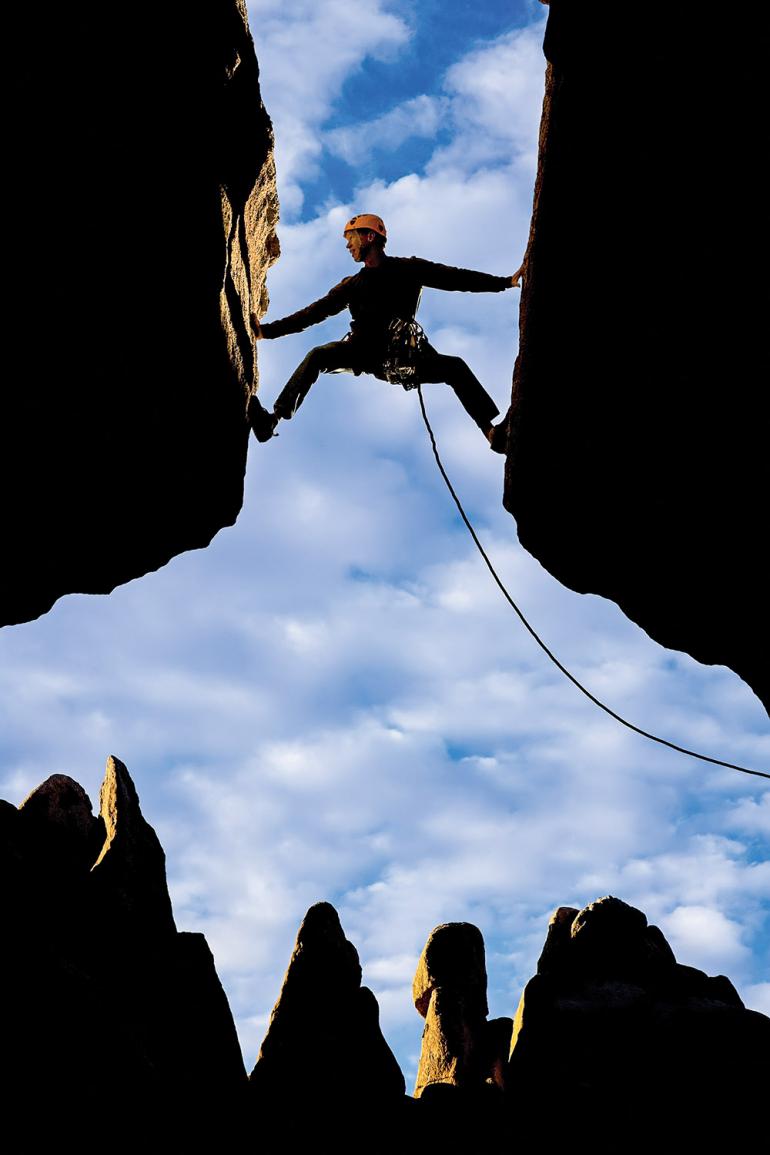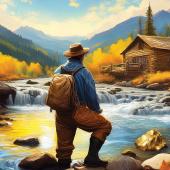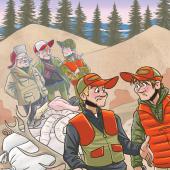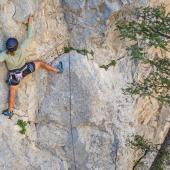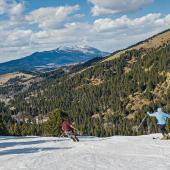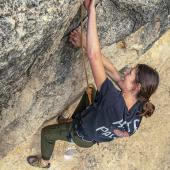Stressful Serenity
Finding peace when fear comes knocking.
The river sounds a quiet rumble and a soft breeze fills the air. Afternoon sun warms the canyon, but in the shade the gneiss is still cold and grippy beneath my hands. I’m halfway up a precarious column of stone on a route my partner referred to as “really pretty.” Depending on your definition, she might be right, but I am not a climber. So when I reach the exposed corner where the blank wall folds at a near-90-degree angle, the last thing I’m thinking about is how “pretty” it is. Both panels are smooth and sheer. The rock looks blank.
My position scares the hell out of me and I feel embarrassed. Hoping I’ve drifted off-route, I call down, voice a-quiver: “Well, uh, so, what does it look like from your angle?” She informs me, to my dismay, that I am indeed in the right spot. Well above my last piece of protection, with significant distance to the next, my palms dampen and my legs buckle. I’ve never hated anything more in my life.
This is no time to be self-conscious. What I need now is confidence, or at least some audacity to help get me through this. It sucks, though. I’m terrified of heights and my stomach feels like it might burst through my throat. I don’t even know why I climb in the first place. Maybe it’s to make me tougher, or a way to prove that I’m not a quitter, or maybe it’s just a reason to spend time with people I love. Whatever it is, I don’t want to be here.
Climbing has a way of doing this, a way of making people abandon rational thought. Up on the wall, when gravity and outer space become so intimate, it’s hard not to envision worst-case scenarios—it’d be weird if we didn’t. But fear is a two-sided coin. There are times to reckon with it, as well as moments to disregard it completely.
Rational fears, as I call them, come from coffee-table conversations or topo-map study sessions—places where you can ponder with objective judgement rather than emotional reaction. This is the time to take fears rather seriously. Thisis the time to ask yourself if the reward is worth the risk.
But after contemplating the situation and agreeing to all potential outcomes, fear can be abandoned. This sounds impudent, and maybe it is, but it’s also completely possible. And in moments that test one’s threshold of capability, it becomes absolutely critical. These are the thoughts I have off the rock, that until now have stayed there: distant and unhelpful. But today, for some reason, they seep in.
I take a moment to gather my thoughts, breathing long and deep. After all, I’m standing on a wide enough ledge to give both my arms and legs a rest. There’s no reason to cramp up right now. Sure, my partner looks strangely small from above, but I trust her to catch me, and the face is vertical. A fall is rather safe should I slip.
Placidity restored, attitude properly adjusted, I take another look up at the dihedral and make out a virtual sequence that will lead me to my next resting point. I envision the exact movements I’ll need to make, the pressures I’ll apply with my fingers and toes. As my focus enhances, my world narrows to a field extending only as far as my arms and legs will reach. Everything else fades. I feel strong again; my head is clear and in control.
And then I remember. This is why I climb—to reckon with myself, to find something in a place I wouldn’t expect it, to harvest serenity from stress.
Poised, I ease my way off the ledge and into the corner, remembering that from here on, any fears or doubts have no business interrupting my experience. Whatever my fate, it will be discovered free of distraction, purely present, and in absolute commitment—which I’m coming to find, in climbing, is the quintessential appeal.


